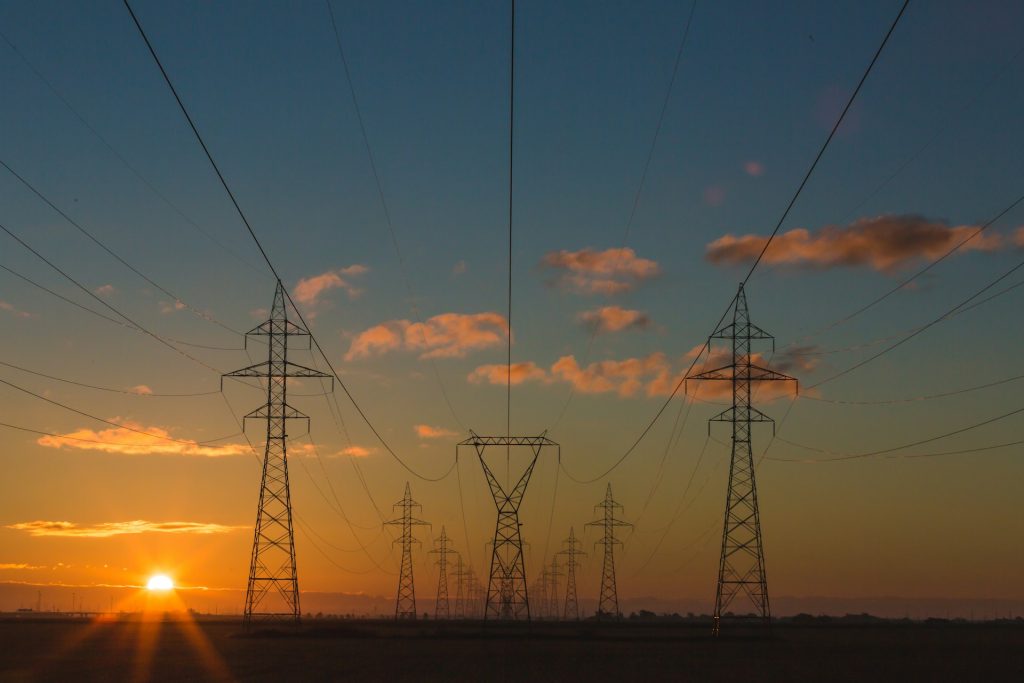From Heat Waves to Hurricanes: Climate Change’s Toll on Electricity

By: Evelyn Long
Climate change threats are a present-day reality with significant effects on energy infrastructure. As weather events worsen, the U.S. electricity grid faces exceptional challenges. From heat waves to hurricanes, power outages put residents and businesses at risk like never before.
The Rising Threat to Power and Connectivity
A crumbling electric grid — 70% of its transmission lines are over 25 years old — has been no match for climate change. Today, communities nationwide are vulnerable to lost connectivity due to extreme weather.
In 2012, Superstorm Sandy barreled through the northeast, causing $65 million in damage and leaving households in the dark for weeks.
More recently, 2.2 million customers lost power in Houston as July’s Hurricane Beryl made landfall. Although the provider restored power to 1 million households within 48 hours, the rest waited over a week. Sadly, reports indicated seven people ages 50-110 died from heat-related causes due to a lack of air conditioning.
Inclement weather, outages and infrastructure damage will continue to rise as climate change worsens. Already, hotter temperatures hinder transmission capacity, while increased precipitation and wildfires obstruct distribution lines. These effects underscore the importance of grid resilience.
Ramifications of a Weakened Power Supply
Losing power during extreme weather is inconvenient, if not detrimental, to societies. Areas with prolonged outages face even greater risks associated with a weakened electric grid. The following implications plague communities enduring climate change’s toll on connectivity.
-
Public Safety Risks
Most power outages last for 20 minutes, depending on the underlying cause. However, extended blackouts can result in a public safety risk. Without electricity, people cannot run their air conditioning, which may lead to heat stroke or death. Older adults may also be unable to operate essential medical equipment.
A lack of hospital beds or essential services during electricity disruptions also endangers people’s lives. When Hurricane Beryl tore through Houston, local hospitals reported four to eight patients receiving pressurized oxygen daily due to carbon monoxide poisoning, which occurs more often from running generators.
Disrupted Economy
Workers can’t get anything done without internet access, and factories can’t operate without electricity. This results in lost productivity, job losses and missed pay. For instance, an employee earning $25 hourly might lose $200 from a full day’s work.
Lost productivity will disrupt the economy in different ways depending on the scale of the outage, but could pose serious long-term consequences for businesses and people’s livelihoods.
-
Higher Costs
The increased demand for electricity after an outage strains the already-weakened grid and drives up energy costs. Likewise, replacing equipment and appliances damaged from power surges also accrues unexpected expenses.
Citizens might also need to throw away spoiled food and spend more on groceries, leading to financial losses for which they may not have been prepared.
-
Technological and Communication Impacts
With increased disruptions to the internet, data centers and communication services, communities face higher risks to their digital infrastructure. A weakened electric grid may make systems more susceptible to cyberattacks. Outages also make it harder to disseminate critical information to the public during emergencies.
-
Supply Chain Disruptions
Of course, plants, factories and assembly lines depend on electricity. Therefore, a power outage may delay and backlog orders. Without electricity, production halts, and warehouses cannot fulfill shipments. Suppliers may also have difficulty communicating with customers, businesses and partners.
Blackouts may especially impact food production and pharmaceuticals, with some companies experiencing product spoilage from a lack of refrigeration.
Solutions for Grid Resilience
Until widespread upgrades strengthen grid resilience, climate change will continue to impact electricity throughout vulnerable communities. Reliance on generators is only a short-term solution for customers — the country must take more robust measures to ensure constant connectivity.
Leaning into renewable energy is the first step to ensuring electricity generation. With the record number of residential and commercial solar panel systems installed, the U.S. captured 24% of utility-scale electricity from renewable sources in 2022. Renewable energy provides power even when major storms cause outages and offsets high energy demand.
Many communities also explore microgrids, which may be connected to the grid or as independent power distributors. These systems have proved efficient for supporting localized electricity and can switch between fuel types, including renewables.
Of course, mitigating climate change is critical to strengthening the electricity grid. Otherwise, extreme weather events will become more prevalent and intense, posing severe community threats.
- Keeping the Lights on During the Worst of the Storm
Few can deny the impacts climate change is having on the electrical grid. Unfortunately, due to extreme weather and power demand, power outages will only occur more frequently. Taking the grid from strained to strong comes from building a more sustainable and resilient energy future.
________________________
Author:
Evelyn Long is a writer and editor focused on construction and sustainability. Her work can be found on Renovated, a web resource for better building and design.



